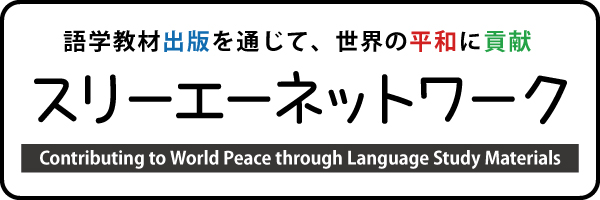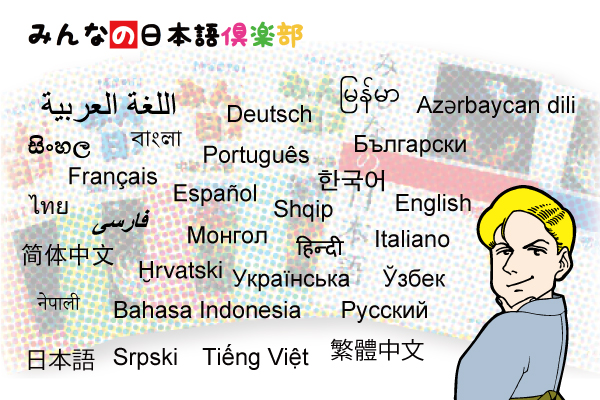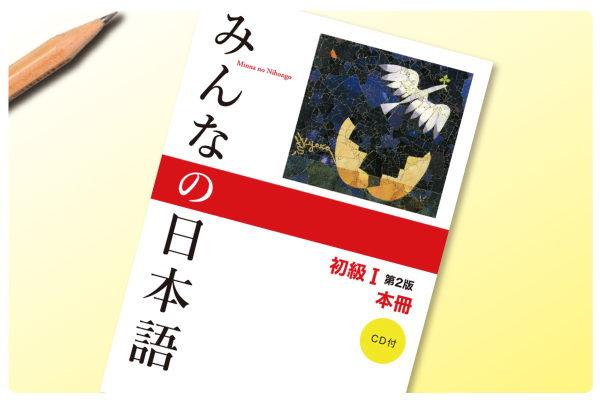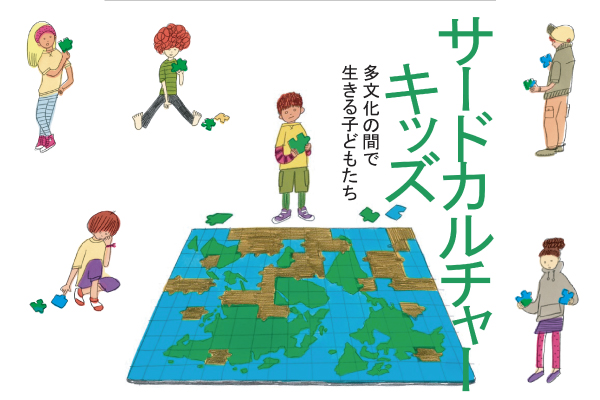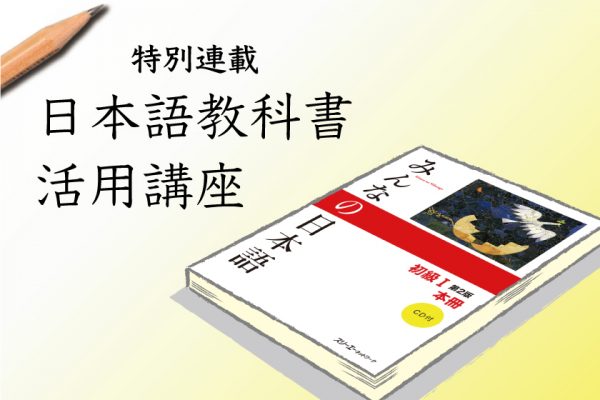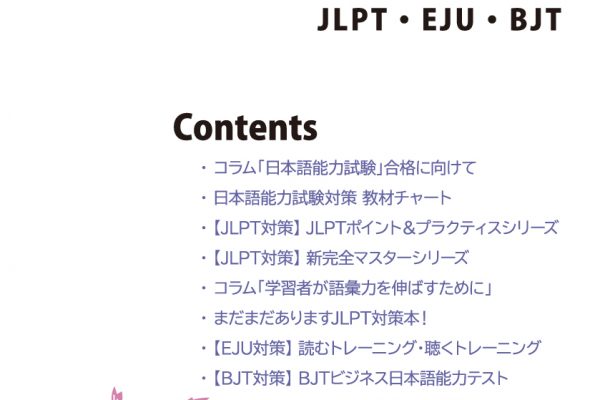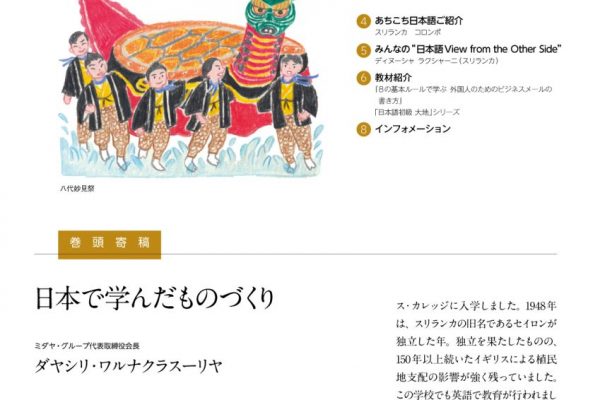Ⅰ. Structure
The second edition of Minna no Nihongo Shokyu I consists of two volumes: the Main Text (with CD) and the Translation and Grammar Notes. Beginning with English, the Translation and Grammar Notes has now been published in more than 14 languages.
The materials have been compiled with the aim of inculcating the four skills of speaking, listening, reading and writing. However the Main Text and the Translation and Grammar Notes do not provide any instruction in reading and writing hiragana, katakana, or kanji.
Ⅱ. Contents
1. Main Text
1) Japanese Pronunciation
This section gives examples of the chief points to note concerning Japanese pronunciation.
2) Classroom Language, Everyday Greetings and Expressions, Numerals
This section contains a list of words and phrases used in the classroom, basic everyday greetings, and so on.
3) Lessons
There are 25 lessons, each containing the following:
① Sentence patterns
Basic sentence patterns to be learned in that lesson.
② Example sentences
Basic sentence patterns incorporated into short dialogues to show how they are used in actual conversation. New adverbs, conjunctions, and other parts of speech, plus further learning points, are also introduced.
③ Conversation
In the conversation, foreign people living in Japan appear in a variety of situations. The conversation includes everyday greetings and other expressions and as well as the material to be learned in the lesson. If time allows, students can try developing the conversation by introducing some of the Useful Words given in the Translation and Grammar Notes.
④ Exercises
The exercises are split into three levels: A, B, and C.
Exercise A is laid out visually to help students understand the grammatical structure easily. It has been designed to make it easy for students to practice conjugating verbs and forming connections, as well as mastering the basic sentence patterns.
Exercise B employs various forms to strengthen students’ grasp of the basic sentence patterns. A number with an arrow(➡) indicates an exercise that uses an illustration.
Exercise C is designed to help students improve their communication abilities. Students use this exercise to practise conversing while substituting the underlined words in the designated conversation with alternatives matching the situation; however, to prevent this becoming a simple substitution drill, we have wherever possible avoided using words to indicate substitutions. This means that the exercises are very free, with students able to create various different conversational examples based on a single illustration.
Model answers to Exercises B and C are available in a separate compilation volume.
⑤Practice questions
There are three types of practice question: listening comprehension, grammar, and reading comprehension. The listening comprehension questions are further subdivided into two types: answering short questions, and listening to short conversations and grasping the key points. The grammar questions check students' understanding of vocabulary and grammar points. For the reading comprehension questions, students read a simple passage incorporating vocabulary and grammar they have already studied, and perform various types of task relating to its contents.
⑥ Review
This is provided to enable students to go over the essential points once more every few lessons.
⑦ Summary of Adverbs, Conjunctions and Conversational Expressions
These are practice questions designed to enable students to review the adverbs, conjunctions and conversational expressions presented in this textbook.
4) Verb forms
This section summarises the verb forms presented in this textbook, together with various forms added to the ends of verbs.
5) Table of Key Learning Points
This is a summary of the key learning points presented in this textbook, focusing on Exercise A. It indicates which of the Sentence Patterns, Example Sentences, and Exercises B and C are relevant to each of the learning points introduced in Exercise A.
6) Index
This includes Classroom Language, Everyday Greetings and Expressions, and new vocabulary and expressions appearing in each lesson, with references to the lesson in which they first appear.
7) Included CD
The CD that goes with this book contains the conversation and the listening comprehension exercises from each lesson.
2. Translation and Grammar notes
1) Explanations of the general features of Japanese, as well as the Japanese writing and pronunciation systems.
2) Translations of Classroom Language, and Everyday Greetings and Expressions.
3) The following for each of Lessons 1 through 25:
① New words and their translations.
② Translations of Sentence Patterns, Example Sentences and Conversations.
③ Useful words relevant to each lesson and snippets of information on Japan.
④ Explanations of the grammar of the Sentence Patterns and expressions.
4) A summary of how to express numbers, time, and time periods, a list of counter suffixes, and conjugations of verbs.
Ⅲ. Time Required to Complete the Lessons
As a guideline, it should take students 4-6 hours to cover each lesson, and 150 hours to finish the entire book.
Ⅳ. Vocabulary
The book presents approximately 1,000 words, mainly ones used frequently in daily life.
Ⅴ. Kanji Usage
Wherever possible, kanji used in this book have been selected from the list of Kanji for Regular Use (Joyo Kanji) announced by the Japanese Cabinet in 1981.
1)「熟字訓」[jukujikun](words that are formed from two or more kanji and have a special reading) which appear in the Appendix to the Joyo Kanji list are written in kanji:
| e.g. | |
| 友達 | friend |
| 果物 | fruit | spectacles |
2) Some kanji and readings not appearing in the Joyo Kanji list have been used in place names, people’s names and other proper nouns, and in words from artistic, cultural and other specialised fields:
| e.g. | |
| 大阪 | |
| 奈良 | Nara |
| 歌舞伎 | kabuki |
3) To make the text easier to read, some words have been written in kana even though they appear in the Joyo Kanji list:
| e.g. | |
| ある(有 |
have・exist |
| たぶん(多分) | probably |
| きのう(昨日) | yesterday |
4) Numbers are usually shown as Arabic numerals:
| e.g. | |
| 9時 | nine o’clock |
| 4月1日 | 1st April |
| 1つ | one |
Ⅵ. Miscellaneous
1) Words that can be omitted are enclosed in square brackets:
| e.g. | |
| 父は 54[歳]です。 | My father is 54 [years old]. |
2) Synonymous words and expressions are enclosed in round brackets:
| e.g. | |
| だれ(どなた) | who |

